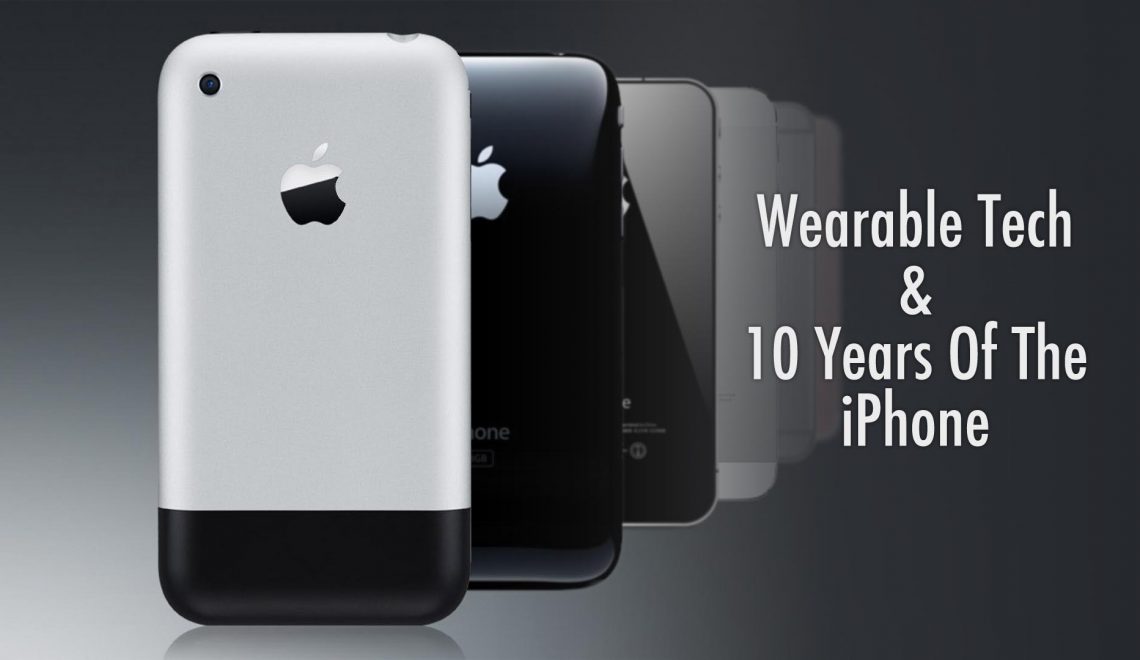From smartwatches, to connected dressing rooms, to recycled clothing, 2015 was an incredible year for fashion and technology. We saw advances to help us be better global citizens, encourage kids to be smarter, and keep us connected at all times. While 2016 promises to be the year that fashion tech and wearables begin to find their audience, 2015 laid the groundwork!
Head past the break as we take a look at the stories we believe shaped the industry in 2015 and that will define where the integration of fashion and technology is headed.
The Apple Watch

Without a doubt the biggest story on the wearable front in 2015 was the Apple Watch. Despite exciting advances with Android Wear, 3 new devices from Pebble, and the first Samsung Gear compatible with other manufactures’ handsets, all anyone could talk about was the Apple Watch. The device has become the “Kleenex” of smartwatches and chances are even your Grandmother has heard of it. The Apple Watch single handedly brought the niche smartwatch category out of the shadows and made it appear cool, trendy, and not-so-techie. Sure the Watch is less than perfect; it can be slow, a bit clunky to use, and has yet to materialize a killer feature. But its importance lies beyond just sales numbers (which Apple refuses to release), unquestionably helping the industry as a whole. Much like looking back at the 1st iPhone, we expect we will see huge advances in the coming years with the Apple Watch. The second iteration of Apple devices is usually when the company excels, so we cannot wait for the Apple Watch 2 this Spring and to see if it can continue to push the wearable category forward!
3D Printing Becomes Fashionable

It is easy to understand why 3D printing captures people’s imaginations. There is something magical about the idea of creating something from nothing in your own home whenever you want it. But the implications of 3D printing go much deeper; it has the potential to completely disrupt a century old manufacturing model, which has profound implications for both the global labor force and the environment. While 3D printing has mostly been relegated to plasticy knickknacks and toys, there has been a lot of intrigue surrounding the tech because of what it could be capable of. Well, 2015 was the year we finally got to see some of that potential. In May, a Kickstarter surfaced for Electroloom; a brilliant product that sprays electrically charged textile strands onto a form to create a fabric shirt. While still early in development, it results in the creation of a wearable (albeit, poor fitting) shirt. A few months later, MIT developed an advancement for 3d printing files that enables designers to implement easily adjustable attributes into a 3D model. For example, this would one day allow one 3D printing file for a t-shirt to have easy to use selectors for different fits for small, medium, and large sizes, a crew neck or v neck collar, and cuts for either a men’s or woman’s shirt. Towards the end of the year, material advancements allowed for the construction of shoe midsoles via a 3D printer. Both New Balance and Adidas showed off running shoes that used a porous design in the sole to allow for cushioning and flexibility. In fact, this April, New Balance will be the first major shoe company to sell a sneaker with a 3D printed midsole. The advancements in 3D printing over the past 12 months is stunning. In 2014, the big news was a flexible 3D printed shoe that bore little resemblance to what you think of as a sneaker. It was all one piece, with no true midsole or cushioning…think: a lace up, shaped, rubber sock. Just over a year later, you can purchase a true running shoe with a major component created through 3D printing!
Fashion Tech Finds Its Footing

Fashion tech isn’t a new idea. The concept has been around for a while and we would see a novelty garment here or there. But in 2015, fashion tech finally emerged as something real. It all seemed to come to a head at the 2015 BAFTA awards, where actress Donna Air walked the red carpet in a Rebecca Street designed LED dress. The show stopper dress, with lights that responded to movement, received a ton of press, both positive and negative. Whether a coincidence or not, that was the point where we began to see technology’s influence on fashion emerge from the sidelines. Don’t get us wrong, fashion tech is far from mainstream…actually, it is far from being purchasable by an average consumer…but now it is a point of interest. We are beginning to see fashion tech focused runway events during fashion weeks and even select garments from major designers. Zac Posen worked with teen girls to code an LED dress that he showed at this Fall’s NY Fashion Week (the dress was worn by Lupita Nyong’o at the Star Wars premier) Adam Selman demoed clothing with integrated contactless payment abilities, and Chromat walked a sports bra automatically opens vents based on your body heat. MIT even developed a power-free technology that uses bacteria to open vents on clothing based on humidity levels. 2016 promises to push the idea of fashion tech even further into the mainstream when the Met Ball focuses on the convergence of the two ideas with the theme of ‘Manus x Machina: Fashion in an Age of Technology.’ With Jony Ive on the event’s board, Apple’s involvement, and the daring fashions usually worn, we expect fashion tech to be on parade to a degree we have yet to see!
Growing Adaptation of Smart Dressing Rooms

Chances are there are few people in the civilized world who have not been into a dressing room. It, therefore, is no secret that the experience is lousy. No matter how nice the store, the fitting rooms are almost always a let down. Small, hot, dirty, poorly lit, questionable mirrors…and let’s not even get into the process of getting a different size once you are in the fitting room (especially if you are at a department store). Smart dressing rooms offer the almost utopian idea of an easy, seamless, informative, and (dare we say) fun fitting room experience. And the benefit isn’t only for the consumer, research has found that purchase rates increase markedly in retail stores that have implemented a smart dressing room. In 2015 the technology begin to really roll out into the real world. Rebecca Minkoff began integrating the tech into her boutiques. The smart mirror recognizes which clothes you bring into the dressing room, allows you to request different sizes or colors, showcases different looks you can build with the clothing, allows you to store in a personal account what you have tried on, and even lets you check out! Ralph Lauren has launched a similar technology at their flagship Polo store in NYC, which also allows your adjust the lighting to different “on brand” environments (such as sunset in the Hamptons or evening at The Polo Bar). Neiman Marcus is taking a slightly different approach with their technology. Dubbed a Memory Mirror, the mirror uses a camera to record you in various outfits. This allows you to playback the video to see the garment from different angles, compare it side-by-side with another item, or share your try-on video with friends or view it later from the Neiman Marcus mobile app. Perhaps most impressively, the mirror also allows you to virtually see what a garment would look like in another color with a wave of your hand. Smart dressing rooms are clearly the future; the technology benefits everyone involved. While the experience is still riddled with glitches, it promises a richer, more seamless retail experience. 2016 should see a further roll out of smart dressing rooms as the technology continues to mature.
Increased Environmental Consciousness

Fashion is one of the most harmful industries in the world to the environment (2nd only to oil!). Terrible factory conditions, toxic chemicals, large amounts of waste, and a fast consumption rate all contribute to this. But 2015 saw a number of large garment makers try to help the earth. Levi’s began a recycling program that offers 20% off a new pair of jeans when you bring in your old pair for recycling. With a 3 year average lifespan, Levi’s wanted to give new life to unwanted jeans. While the recycling program currently converts the denim into building insulation and cushions, the company is investing towards figuring out how to use the jeans to move to circular economy. A circular economy would mean the instead of creating goods from new materials, new goods would be created from old goods; the closer you are to the center of the circle, the fewer new goods are introduced. It is an exciting concept that Levi’s plans to implement by 2020, if they can overcome some R&D hurdles. Repurposing clothing is a fantastic initiative, but Adidas is looking to do one better by repurposing trash! The company partnered with Parley For The Oceans this year to create a sneaker whose entire upper was constructed from ocean plastic and seized gillnets. It is an amazing idea and Adidas is currently working to bring it to market. Continuing the idea of using fashion to undo harm already done to the environment, a team of designers developed the SpongeSuit this year. The partially 3D printed bikini contains a nano-scale super-hydrophobic carbon material. Various shapes and sizes of microscopic pores in the material separate and retain contaminants found in the water. The suit can capture 25 times its weight of nasty substances and safely retains them until the material is heated to 1,000 degrees Celsius. We also would be remiss not to mention Livia Firth’s fantastic Met Ball dress made of 100% recycled plastic! Hopefully the year ahead will continue to bring huge strides forward in improving the world around us!





